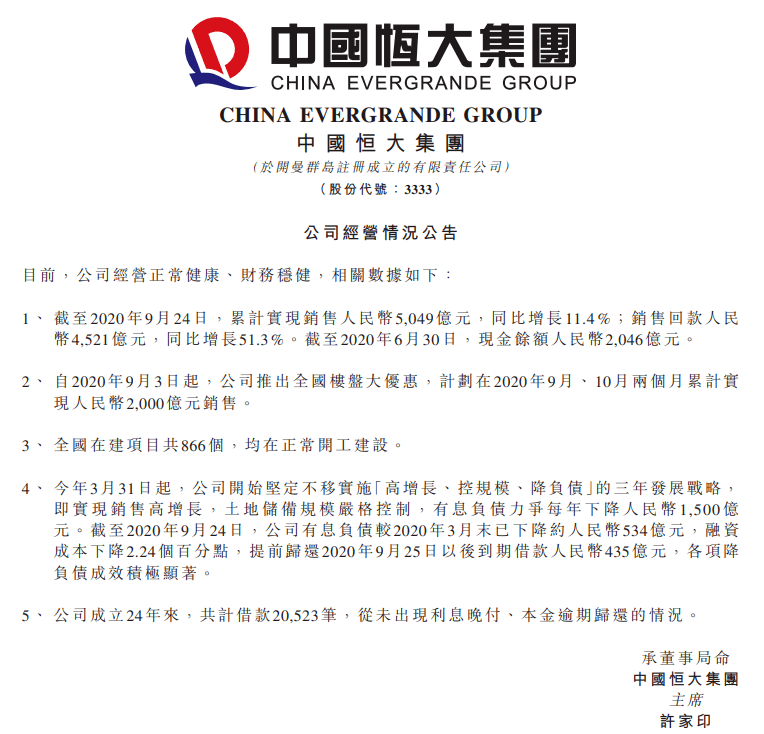еЈ°жҳҺ
з”ұдәҺдј ж’ӯгҖҒеҲ©з”ЁжӯӨж–ҮжүҖжҸҗдҫӣзҡ„дҝЎжҒҜиҖҢйҖ жҲҗзҡ„д»»дҪ•зӣҙжҺҘжҲ–иҖ…й—ҙжҺҘзҡ„еҗҺжһңеҸҠжҚҹеӨұпјҢеқҮз”ұдҪҝз”ЁиҖ…жң¬дәәиҙҹиҙЈпјҢйӣ·зҘһдј—жөӢд»ҘеҸҠж–Үз« дҪңиҖ…дёҚдёәжӯӨжүҝжӢ…д»»дҪ•иҙЈд»» гҖӮ
йӣ·зҘһдј—жөӢжӢҘжңүеҜ№жӯӨж–Үз« зҡ„дҝ®ж”№е’Ңи§ЈйҮҠжқғ гҖӮеҰӮж¬ІиҪ¬иҪҪжҲ–дј ж’ӯжӯӨж–Үз« пјҢеҝ…йЎ»дҝқиҜҒжӯӨж–Үз« зҡ„е®Ңж•ҙжҖ§пјҢеҢ…жӢ¬зүҲжқғеЈ°жҳҺзӯүе…ЁйғЁеҶ…е®№ гҖӮжңӘз»Ҹйӣ·зҘһдј—жөӢе…Ғи®ёпјҢдёҚеҫ—д»»ж„Ҹдҝ®ж”№жҲ–иҖ…еўһеҮҸжӯӨж–Үз« еҶ…е®№пјҢдёҚеҫ—д»Ҙд»»дҪ•ж–№ејҸе°Ҷе…¶з”ЁдәҺе•Ҷдёҡзӣ®зҡ„ гҖӮ
No.1
з®Җиҝ°
еүҚж®өж—¶й—ҙеӨӘеҝҷдәҶпјҢеҝҷеҲ°еҫҲеӨҡдёңиҘҝпјҢеҸӘжҳҜи®°еҪ•дәҶ笔记пјҢжІЎжңүжҲҗж–ҮпјҢеҲҡеҘҪжңҖиҝ‘йҳ¶ж®өеҸҲеҮәжқҘдәҶshiroжқғйҷҗз»•иҝҮжјҸжҙһпјҢеӣ жӯӨжң¬ж–Үе°ҶиҝҷдёүдёӘжқғйҷҗз»•иҝҮзҡ„жҙһиҝӣиЎҢеҜ№жҜ”пјҢ他们зҡ„зј–еҸ·еҲҶеҲ«жҳҜ CVE-2020-1957гҖҒCVE-2020-11989гҖҒCVE-2020-13933гҖӮ
No.2
жјҸжҙһз»ҶиҠӮ
1гҖҒCVE-2020-1957
еҺҹзҗҶ

ж–Үз« жҸ’еӣҫ
йҰ–е…ҲеңЁ admin дҪҚзҪ®дёӢж–ӯзӮ№пјҢеҸҜд»ҘзңӢеҲ°пјҢжҲ‘们зҪ‘з»ңиҜ·жұӮпјҢжҳҜе…Ҳз»ҸиҝҮshiro еӨ„зҗҶд№ӢеҗҺпјҢеҶҚиҪ¬еҸ‘еҲ°springbootиҝӣиЎҢи·Ҝз”ұеҲҶеҸ‘е·ҘдҪң гҖӮ

ж–Үз« жҸ’еӣҫ
иҝҷйҮҢзӣҙжҺҘе®ҡдҪҚеҲ° shiroеӨ„зҗҶurlзҡ„ж–№жі•дҪҚзҪ®пјҡWebUtils# getPathWithinApplication
public static String getPathWithinApplication(HttpServletRequest request) {
String contextPath = getContextPath(request);
String requestUri = getRequestUri(request);
if (StringUtils.startsWithIgnoreCase(requestUri, contextPath)) {
// Normal case: URI contains context path.
String path = requestUri.substring(contextPath.length);
return (StringUtils.hasText(path) ? path : "/");
} else {
// Special case: rather unusual.
return requestUri;
}
}
е®һйҷ…дёҠ继з»ӯи·ҹиҝӣ getRequestUri(request);иҝҷдёӘж–№жі•пјҢеҸҜд»Ҙжё…жҘҡзҡ„зңӢеҲ°пјҢе®һйҷ…дёҠи°ғз”Ёзҡ„жҳҜgetRequestURI ж–№жі•жқҘиҺ·еҸ–и·Ҝз”ұдёӯзҡ„URI иҜ·жұӮ гҖӮ

ж–Үз« жҸ’еӣҫ
иҝҷйҮҢзҡ„ URIе°ұжҳҜжҲ‘д»¬дј е…Ҙзҡ„/xxx/..;/hello/aaaaпјҢд№ҹе°ұжҳҜиҜҙеӣһеҲ° getRequestUri(request);еҪ“дёӯпјҢдјҡеёҰзқҖиҝҷдёӘдј е…Ҙзҡ„URIиҝӣе…ҘdecodeAndCleanUriString иҝӣиЎҢеӨ„зҗҶ гҖӮ
public static String getRequestUri(HttpServletRequest request) {
String uri = (String) request.getAttribute(INCLUDE_REQUEST_URI_ATTRIBUTE);
if (uri == ) {
uri = request.getRequestURI;
}
return normalize(decodeAndCleanUriString(request, uri));
}
еңЁ decodeAndCleanUriStringж–№жі•дёӯдјҡж №жҚ®жҲ‘们зҡ„дј е…Ҙзҡ„URIдёӯ;иҝӣиЎҢжҲӘж–ӯеӨ„зҗҶпјҢд№ҹе°ұжҳҜиҜҙз»ҸиҝҮеӨ„зҗҶд№ӢеҗҺпјҢиҝ”еӣһзҡ„з»“жһңеҸҳжҲҗдәҶ/xxx/..

ж–Үз« жҸ’еӣҫ
иҖҢ normalize ж–№жі•е°ұдјҡеҜ№жҲ‘д»¬дј е…Ҙзҡ„pathиҝӣиЎҢдёҖдәӣеӨ„зҗҶпјҢд»ҺжіЁйҮҠдёҠпјҢд№ҹиғҪзҹҘйҒ“иҝҷйғЁеҲҶд»Јз ҒеӨ„зҗҶдәҶд»Җд№ҲдёңиҘҝ:
?жӣҝжҚў\дёә/
?жӣҝжҚў/./дёә/
?жӣҝжҚў/../дёә/
?...
private static String normalize(String path, boolean replaceBackSlash) {
if (path == )
return ;
// Create a place for the normalized path
String normalized = path;
if (replaceBackSlash && normalized.indexOf('\') >= 0)
normalized = normalized.replace('\', '/');
if (normalized.equals("/."))
return "/";
// Add a leading "/" if necessary
if (!normalized.startsWith("/"))
normalized = "/" + normalized;
// Resolve occurrences of "//" in the normalized path
while (true) {
int index = normalized.indexOf("//");
if (index < 0)
break;
normalized = normalized.substring(0, index) +
normalized.substring(index + 1);
}
// Resolve occurrences of "/./" in the normalized path
while (true) {
int index = normalized.indexOf("/./");
if (index < 0)
break;
normalized = normalized.substring(0, index) +
normalized.substring(index + 2);
}
// Resolve occurrences of "/../" in the normalized path
while (true) {
int index = normalized.indexOf("/../");
if (index < 0)
break;
if (index == 0)
return ; // Trying to go outside our context
int index2 = normalized.lastIndexOf('/', index - 1);
normalized = normalized.substring(0, index2) +
normalized.substring(index + 3);
}
// Return the normalized path that we have completed
return (normalized);
}
иҖҢиҝҷйҮҢз»ҸиҝҮеӨ„зҗҶпјҢжҲ‘们зҡ„ URI дҫқ然жҳҜ/xxx/..пјҢжҺҘзқҖе°ұдјҡеӣһеҲ°PathMatchingFilterChainResolver# getChainж–№жі•пјҢиҝӣиЎҢжқғйҷҗеҢ№й…ҚпјҢжҲ‘们зҡ„и·Ҝеҫ„жҳҜ/hello/**дёӢйңҖиҰҒиҝӣиЎҢжқғйҷҗи®ӨиҜҒпјҢз”ұдәҺи·Ҝеҫ„дёҚеҢ№й…ҚпјҢжүҖд»Ҙжқғйҷҗж ЎйӘҢиҮӘ然иҝҮдәҶ гҖӮ

жҺЁиҚҗйҳ…иҜ»
- иҜҰи§ЈApache HudiеҰӮдҪ•й…ҚзҪ®еҗ„з§Қзұ»еһӢеҲҶеҢә
- дҪҝз”ЁApacheеҚҸи®®зҡ„жҳҜиҮӘз”ұиҪҜ件еҗ—пјҹ
- й»‘е®ўеӨ§зҘһе‘ҠиҜүдҪ пјҡLinuxдёӢзҡ„жқғйҷҗз»ҙжҢҒ
- Apache HTTP Server 2.4.46 еҸ‘еёғпјҢдҝ®еӨҚе…Ёй—®йўҳе’Ңbug
- еҒңж»һж•°е№ҙеҗҺпјҢElasticJob жҗәйҰ–дёӘ Apache зүҲжң¬ 3.0.0-alpha еӣһеҪ’
- ApacheйЎ¶зә§йЎ№зӣ®пјҢSkyWalkingдёәдҪ•дёҖжһқзӢ¬з§Җпјҹ
- Apacheдёӯ.htaccessж–Ү件еҲ©з”Ёзҡ„жҖ»з»“дёҺж–°жҖқи·ҜжӢ“еұ•
- жҺҢжҸЎLinuxж–Ү件жқғйҷҗпјҢзңӢиҝҷзҜҮе°ұеӨҹдәҶ
- еҰӮдҪ•еҠ еҜҶж•ҙдёӘйЎ№зӣ®пјҢеғҸHMIдёҖж ·пјҢдёҚеҗҢзә§еҲ«жңүдёҚеҗҢзҡ„жқғйҷҗ
- еҹәдәҺspringboot+shiro+freemarkerзҡ„еҝ«йҖҹејҖеҸ‘жЎҶжһ¶пјҢд»Јз Ғе…Қиҙ№еҲҶдә«


















